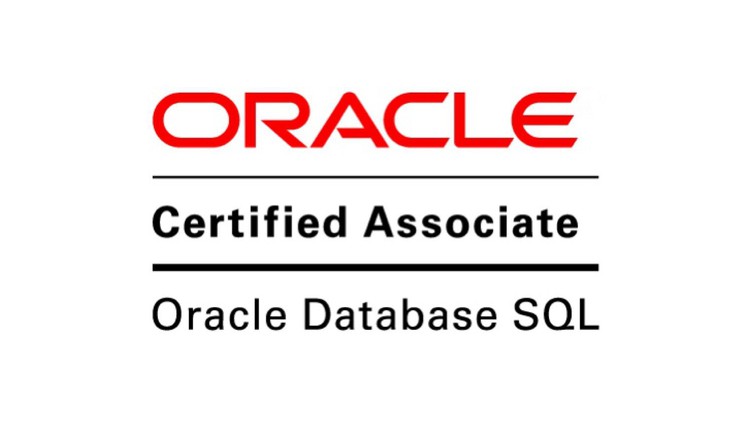
What you will learn
Prepare for the 1Z0-071 Exam
Real simulation of the 1Z0-071 final exam
Learn to handle time before passing the exam
Be 100% ready to pass the exam from the first attempt
Description
-
Format: Multiple Choice
-
Duration: 120 minutes
-
Exam Price: $245
-
Number of Questions:78
-
Passing Score: 63%
-
Validation: This exam was validated against 11g Release 2 version 11.2.0.1.0 and up to 19c
Exam topics:
Relational Database concepts
• Explaining the theoretical and physical aspects of a relational database
• Relating clauses in SQL Select Statement to Components of an ERD
• Explaining the relationship between a database and SQL
Retrieving Data using the SQL SELECT Statement
• Using Column aliases
• Using The SQL SELECT statement
• Using concatenation operator, literal character strings, alternative quote operator, and the DISTINCT keyword
• Using Arithmetic expressions and NULL values in the SELECT statement
Restricting and Sorting Data
• Applying Rules of precedence for operators in an expression
• Limiting Rows Returned in a SQL Statement
• Using Substitution Variables
• Using the DEFINE and VERIFY commands
• Sorting Data
Using Single-Row Functions to Customize Output
• Manipulating strings with character functions in SQL SELECT and WHERE clauses
• Performing arithmetic with date data
• Manipulating numbers with the ROUND, TRUNC and MOD functions
• Manipulating dates with the date function
Using Conversion Functions and Conditional Expressions
• Applying the NVL, NULLIF, and COALESCE functions to data
• Understanding implicit and explicit data type conversion
• Using the TO_CHAR, TO_NUMBER, and TO_DATE conversion functions
• Nesting multiple functions
Reporting Aggregated Data Using Group Functions
• Restricting Group Results
• Creating Groups of Data
• Using Group Functions
Displaying Data from Multiple Tables
• Using Self-joins
• Using Various Types of Joins
• Using Non equijoins
• Using OUTER joins
• Understanding and Using Cartesian Products
Using Subqueries to Solve Queries
• Using Single Row Subqueries
• Using Multiple Row Subqueries
• Update and delete rows using correlated subqueries
Using SET Operators
• Matching the SELECT statements
• Using the ORDER BY clause in set operations
• Using The INTERSECT operator
• Using The MINUS operator
• Using The UNION and UNION ALL operators
Managing Tables using DML statements
• Managing Database Transactions
• Controlling transactions
• Perform Insert, Update and Delete operations
• Performing multi table Inserts
• Performing Merge statements
Managing Indexes Synonyms and Sequences
• Managing Indexes
• Managing Synonyms
• Managing Sequences
Use DDL to manage tables and their relationships
• Describing and Working with Tables
• Describing and Working with Columns and Data Types
• Creating tables
• Dropping columns and setting column UNUSED
• Truncating tables
• Creating and using Temporary Tables
• Creating and using external tables
• Managing Constraints
Managing Views
• Managing Views
Controlling User Access
• Differentiating system privileges from object privileges
• Granting privileges on tables
• Distinguishing between granting privileges and roles
Managing Objects with Data Dictionary Views
• Using data dictionary views